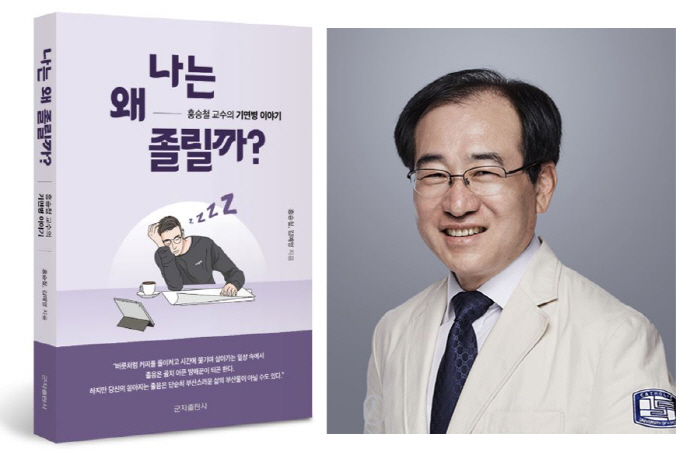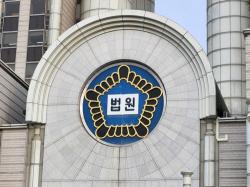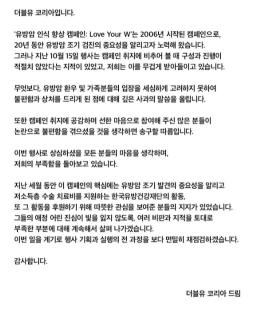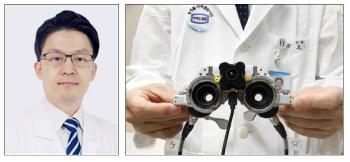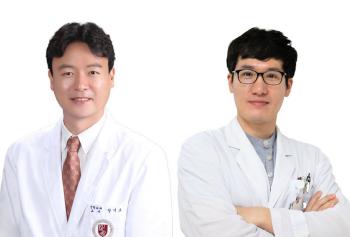Why do I sleep a lot? What's a narcolepsy?
May 12, 2025
"Why am I so sleepy?"
What kind of disease is narcolepsy? I've heard the name, but few people know it properly. Do I have to fall asleep while walking to sleep? Is it a narcolepsy for me to close my eyes after lunch?
Although narcolepsy is often mentioned in the media, it is difficult to find accurate information. Therefore, it is important to spread the correct perception of narcolepsy in order for narcolepsy patients to quickly recognize symptoms and get rid of the stigma of being lazy and receive proper treatment.
Sleep paralysis is a rare sleep disorder characterized by sudden onset of sleepiness and severe daytime drowsiness. It is important for more patients, guardians, and doctors to know about narcolepsy in order to prevent delayed diagnosis of narcolepsy.
In the meantime, Professor Hong Seung-chul of the Department of Psychiatry at Catholic University's St. Vincent's Hospital raised his understanding of narcolepsy and suggested a way for patients and their families to cope with it together 'Why am I sleepy?published '
Professor Hong, who published the book after three years of preparation for writing, said "Kim Ye-young, a practitioner at the Catholic Medical Center, participated in the publication. In addition, Lee Han, chairman of the Korea Association of Mammyeon Disease Patients, wrote a recommendation letter to Lee Seong-pil, honorary professor of Catholic University, Jeong Seok-hoon, professor of psychiatry at Ulsan University Asan Hospital, Yeom Tae-young, and Lee Han, chairman of the Association of Mammyeon Disease Patients, who wrote the book.
Regarding the motivation for writing the book, Professor Hong explained that while it is meaningful to share the experience and knowledge gained by seeing numerous sleep patients who visit sleep clinics for sleep deprivation over the past 25 years and various sleep disorders complaining of sleep deprivation, he wrote the book because he thought it was necessary to spread the social awareness of sleep deprivation symptoms and sleep deprivation.
Professor Hong added that narcolepsy, a typical sleep disorder with severe symptoms of daytime sleepiness, usually occurs in teenagers and is estimated to be about 20,000 people in Korea, but currently less than 10,000 people have been diagnosed.
In addition to narcolepsy, idiopathic hyper-sleep, obstructive sleep apnea, and Kleinlevin syndrome are introduced as sleep disorders that cause daytime sleepiness, and describe in detail the diagnosis, cause, treatment, and social system of narcolepsy. It is also a characteristic of this book to vividly convey patients' symptoms and daily difficulties by carrying various cases of patients and handwriting written by patients themselves in a booklet. In addition, answers to various questions are presented through a question-and-answer chapter that answers questions patients are curious about while undergoing diagnosis and treatment.
In addition, it not only helps people with daytime sleepiness to identify the cause of their own daytime sleepiness, but also explains the symptoms and treatment well through cases of sleep diseases that cause daytime sleepiness. In addition, it is expected to play a sufficient role as a primer for sleep medicine by explaining the mechanism of sleepwalking in detail to understand the overall sleep mechanism.
Professor Hong said, `We expect many people who are sleepy during the day to receive proper treatment through this book, and we hope that many patients with narcolepsy who have not yet been diagnosed will also be diagnosed and treated quickly.' `We hope that social support and understanding will be shared with patients who have difficulties in their daily lives due to severe symptoms.'
Meanwhile, Professor Hong Seung-chul has been treating at the Department of Psychiatry at St. Vincent's Hospital at Catholic University since 1992, and has been working on research and treatment for narcolepsy since 1998 when he trained at Stanford Medical School's Sleep Clinic and the Sleep Disease Research Center in the United States. In 2017, he led the foundation of the Asian Society for Cataract Disease and Hypothesis, led the domestic attraction and hosting of the World Sleep Science Conference in 2015, and is currently the president of the Korean Sleep Society and vice president of the Asian Sleep Society. He has been actively engaged in academic activities by writing a number of papers on sleep disorders including narcolepsy.
What kind of disease is narcolepsy? I've heard the name, but few people know it properly. Do I have to fall asleep while walking to sleep? Is it a narcolepsy for me to close my eyes after lunch?
Although narcolepsy is often mentioned in the media, it is difficult to find accurate information. Therefore, it is important to spread the correct perception of narcolepsy in order for narcolepsy patients to quickly recognize symptoms and get rid of the stigma of being lazy and receive proper treatment.
Sleep paralysis is a rare sleep disorder characterized by sudden onset of sleepiness and severe daytime drowsiness. It is important for more patients, guardians, and doctors to know about narcolepsy in order to prevent delayed diagnosis of narcolepsy.
In the meantime, Professor Hong Seung-chul of the Department of Psychiatry at Catholic University's St. Vincent's Hospital raised his understanding of narcolepsy and suggested a way for patients and their families to cope with it together 'Why am I sleepy?published '
Professor Hong, who published the book after three years of preparation for writing, said "Kim Ye-young, a practitioner at the Catholic Medical Center, participated in the publication. In addition, Lee Han, chairman of the Korea Association of Mammyeon Disease Patients, wrote a recommendation letter to Lee Seong-pil, honorary professor of Catholic University, Jeong Seok-hoon, professor of psychiatry at Ulsan University Asan Hospital, Yeom Tae-young, and Lee Han, chairman of the Association of Mammyeon Disease Patients, who wrote the book.
Regarding the motivation for writing the book, Professor Hong explained that while it is meaningful to share the experience and knowledge gained by seeing numerous sleep patients who visit sleep clinics for sleep deprivation over the past 25 years and various sleep disorders complaining of sleep deprivation, he wrote the book because he thought it was necessary to spread the social awareness of sleep deprivation symptoms and sleep deprivation.
Professor Hong added that narcolepsy, a typical sleep disorder with severe symptoms of daytime sleepiness, usually occurs in teenagers and is estimated to be about 20,000 people in Korea, but currently less than 10,000 people have been diagnosed.
In addition to narcolepsy, idiopathic hyper-sleep, obstructive sleep apnea, and Kleinlevin syndrome are introduced as sleep disorders that cause daytime sleepiness, and describe in detail the diagnosis, cause, treatment, and social system of narcolepsy. It is also a characteristic of this book to vividly convey patients' symptoms and daily difficulties by carrying various cases of patients and handwriting written by patients themselves in a booklet. In addition, answers to various questions are presented through a question-and-answer chapter that answers questions patients are curious about while undergoing diagnosis and treatment.
In addition, it not only helps people with daytime sleepiness to identify the cause of their own daytime sleepiness, but also explains the symptoms and treatment well through cases of sleep diseases that cause daytime sleepiness. In addition, it is expected to play a sufficient role as a primer for sleep medicine by explaining the mechanism of sleepwalking in detail to understand the overall sleep mechanism.
Professor Hong said, `We expect many people who are sleepy during the day to receive proper treatment through this book, and we hope that many patients with narcolepsy who have not yet been diagnosed will also be diagnosed and treated quickly.' `We hope that social support and understanding will be shared with patients who have difficulties in their daily lives due to severe symptoms.'
Meanwhile, Professor Hong Seung-chul has been treating at the Department of Psychiatry at St. Vincent's Hospital at Catholic University since 1992, and has been working on research and treatment for narcolepsy since 1998 when he trained at Stanford Medical School's Sleep Clinic and the Sleep Disease Research Center in the United States. In 2017, he led the foundation of the Asian Society for Cataract Disease and Hypothesis, led the domestic attraction and hosting of the World Sleep Science Conference in 2015, and is currently the president of the Korean Sleep Society and vice president of the Asian Sleep Society. He has been actively engaged in academic activities by writing a number of papers on sleep disorders including narcolepsy.
|
This article was translated by Naver AI translator.
